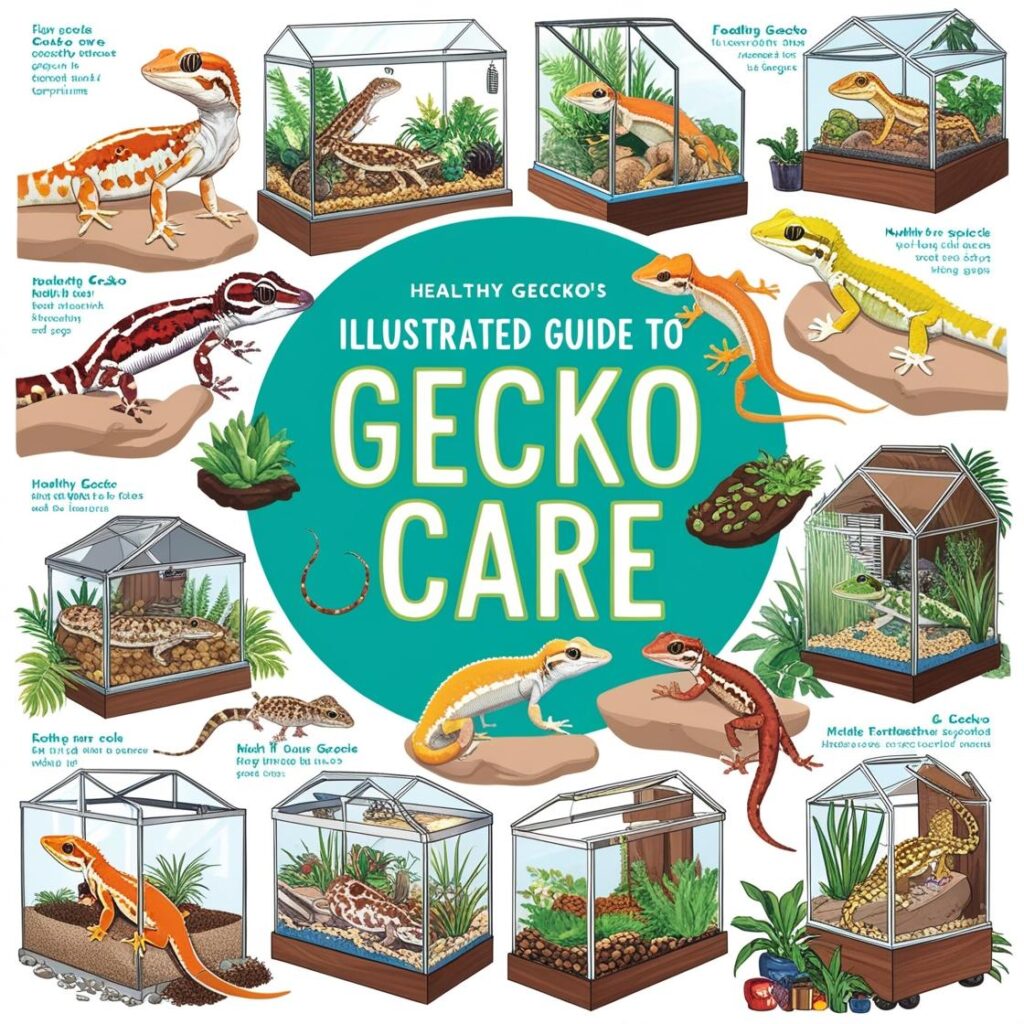Geckos have long fascinated both reptile enthusiasts and casual pet owners alike with their vibrant colors, unique patterns, and engaging behaviors. As one of the most popular reptiles kept as pets, geckos require specialized care to thrive. This guide offers essential insights into how to take care of geckos, ensuring that you can provide a comfortable and nurturing environment for your scaly companions.

Understanding the Different Types of Geckos
Before diving into care specifics, it’s important to recognize that there are over 1,500 species of geckos, varying significantly in size, habitat, and temperament. Some of the most commonly kept species include:
- Leopard Gecko (Eublepharis macularius): Known for their pleasant demeanor and striking spots, leopard geckos are nocturnal and thrive in a dry environment.
- Crested Gecko (Correlophus ciliatus): With their unique crested heads and vibrant colors, these geckos are arboreal and require a more humid environment.
- African Fat-Tailed Gecko (Hemitheconyx caudicinctus): Similar in care to leopard geckos, they have fat tails which store nutrients, making them intriguing pets.
- Tokay Gecko (Gekko gecko): The Tokay gecko is known for its striking colors and vocal nature, but it requires more advanced care due to its aggressive temperament.
Understanding the specific needs of the species you’re interested in is crucial for setting up the appropriate habitat and care regimen.
Creating the Perfect Habitat
- Enclosure:
- For leopard geckos, a 20-gallon tank is often suitable, but larger enclosures may be necessary as they grow. For species like the crested gecko, a 30-gallon vertical enclosure that mimics their arboreal nature works best.
- Ensure the enclosure has proper ventilation and is escape-proof.
- Bedding and Substrate:
- Choose appropriate substrates based on the species. For dry-dwelling geckos like leopard geckos, use reptile carpet, paper towels, or non-adhesive shelf liners. Avoid sand or loose substrate to prevent impaction.
- For moisture-loving species such as crested geckos, consider using coconut fiber or a peat-based substrate.
- Temperature and Lighting:
- Geckos are ectothermic, meaning they rely on external sources for body heat. Provide a temperature gradient in the enclosure: a warm side (85°F – 92°F) and a cooler side (75°F – 80°F) to allow the gecko to thermoregulate.
- A basking spot with a heat lamp or ceramic heater can be beneficial.
- Lighting requirements also vary; leopard geckos require minimal light, while crested geckos need UVB lighting for about 10-12 hours a day to maintain bone health.
- Humidity:
- Humidity levels will vary among species. For leopard geckos, maintain humidity around 30-40%, while crested geckos thrive with 60-80% humidity. Use a hygrometer to monitor levels.
- Misting the enclosure or incorporating a water bowl can help achieve the desired humidity.
- Decor and Hiding Spots:
- Geckos require hiding spots to feel secure. Use commercially available hides or create your own using rocks, logs, and plants.
- Include climbing surfaces, especially for arborial species. Replicating their natural environment helps reduce stress.
Diet and Feeding
Feeding geckos can be simple or complex, depending on the species:
- Insects:
- Leopard geckos primarily eat crickets, mealworms, and dubia roaches. Ensure that insects are appropriately sized—not larger than the gecko’s head.
- Crickets should be gut-loaded (fed nutritious food before offering to your gecko) and dusted with calcium and vitamin supplements to promote healthy growth. A schedule of feeding every 2-3 days works well for adults, while juveniles may require feeding every day.
- Specialized Foods:
- Crested geckos can be fed commercially available powdered diets that are mixed with water. They also enjoy fruit purees and soft insects.
- Make sure fresh water is available in a shallow dish for all gecko species at all times, changing it daily to avoid contamination.
Health and Wellness
- Handling:
- Establish a routine for handling; geckos can be skittish, and sudden movements can stress them. Start by gently coaxing them out of their habitat. Avoid grabbing them by the tail, as this can lead to tail drops, a defense mechanism of some gecko species.
- Signs of Health Issues:
- Regularly observe your gecko for signs of health problems, such as lethargy, lack of appetite, abnormal shedding, or unusual behaviors. If any of these symptoms occur, consult a veterinarian specializing in reptiles.
- Shedding:
- Geckos will periodically shed their skin. To assist with this process, maintain optimal humidity and provide rough surfaces to help them shed. Ensure that your gecko is getting all parts of its skin off to avoid retained shedding that can lead to infections.
Conclusion
Caring for geckos requires commitment and understanding of their specific needs, but the rewards of keeping these fascinating reptiles are immense. With the right habitat, diet, and handling, you can create a thriving environment for your gecko that promotes health and longevity. As you embark on this rewarding journey, always continue to seek out information from reputable sources and connect with experienced reptile enthusiasts to enhance your understanding of these charming creatures. Remember, responsible pet ownership leads to a better quality of life for both you and your gecko.
